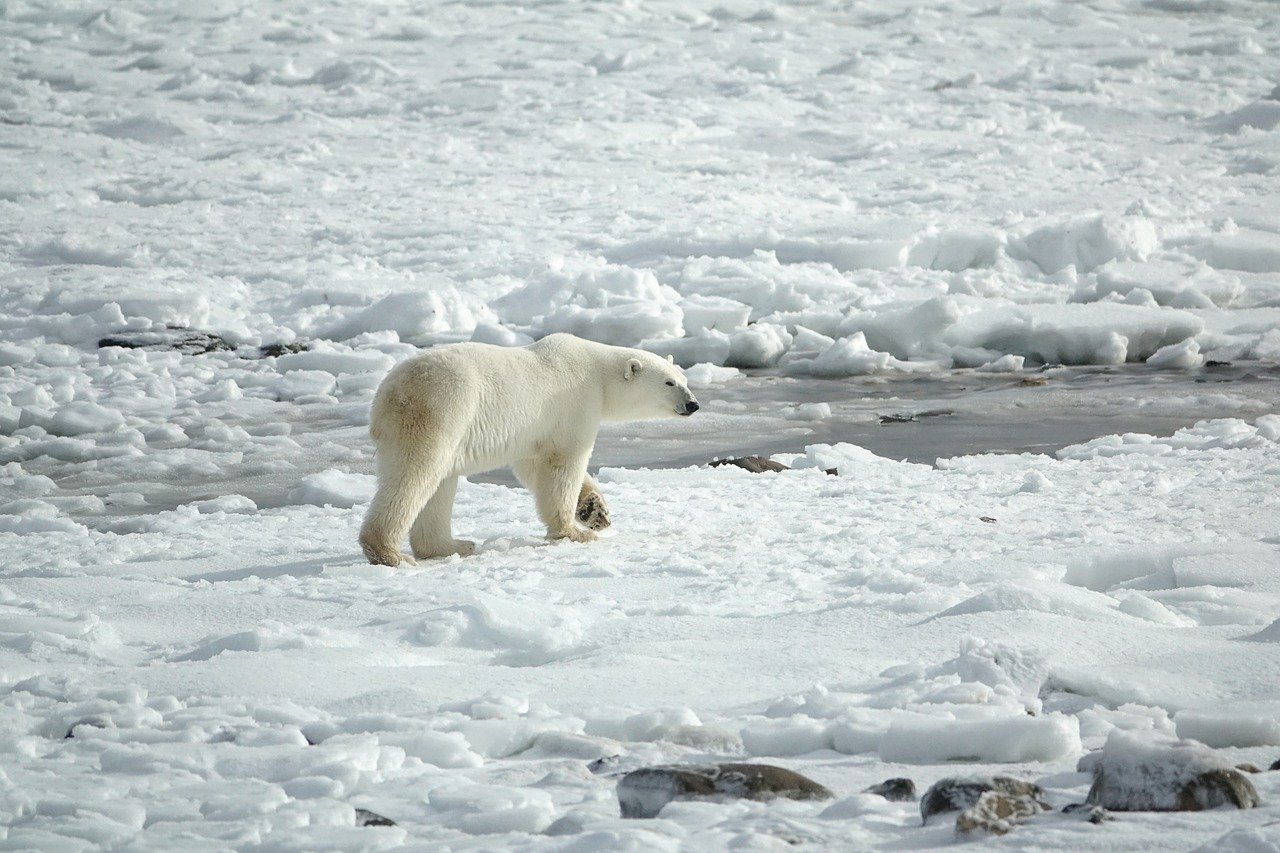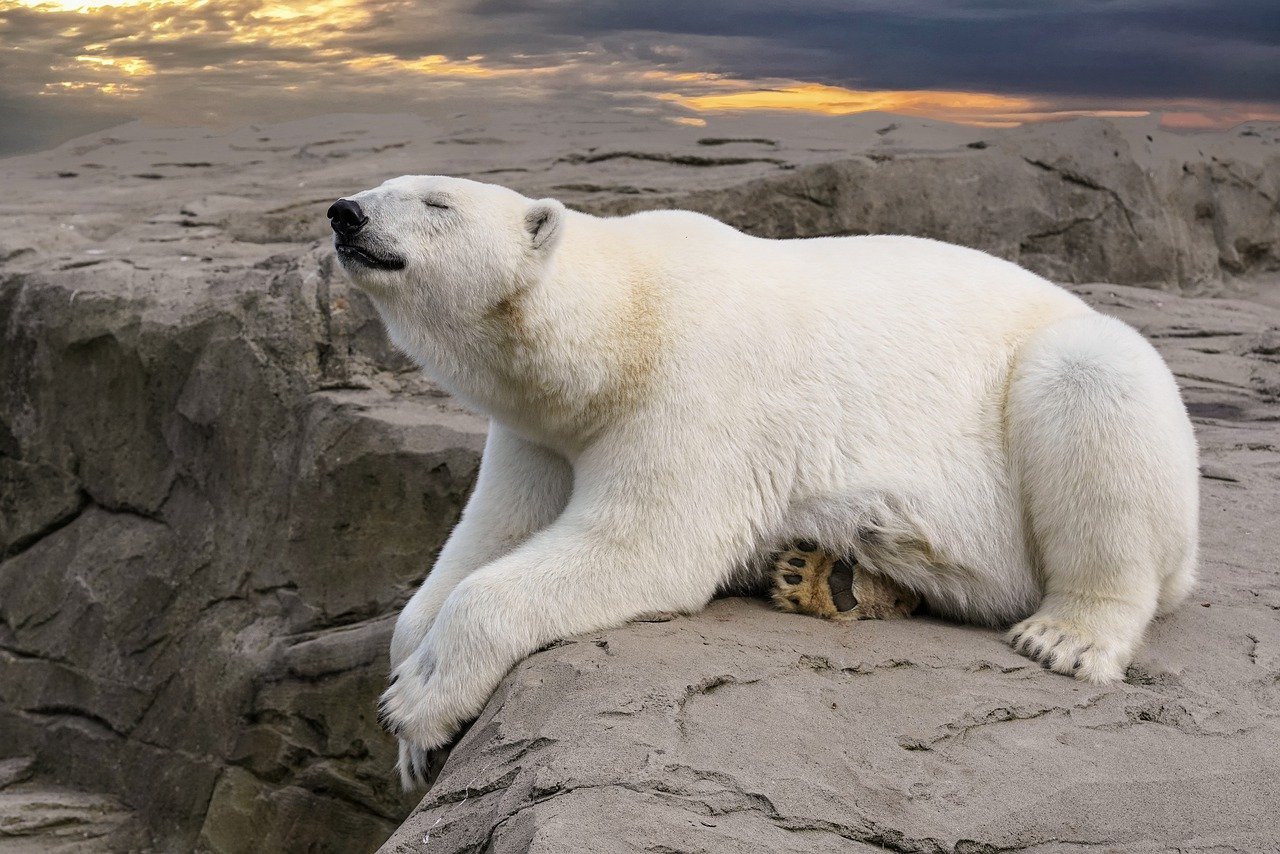Arctic Meltdown: The Dire Consequences for Polar Bears
0 comments
When the Arctic sea ice cover retreated over time, polar bears have spent longer time on land - leaving them more susceptible to health deterioration and starvation.

Polar bears are increasingly coming into more frequent conflict with people as the growing ice-free periods in the Arctic mean their natural prey is harder to find and they look for alternative sources of food to replace diminishing seals.
The research, published earlier this month in the scientific journal Nature Communications, tracked movements of polar bears over three-week periods during three years at Canada's Hudson Bay, an inland marginal sea of the Arctic Ocean, using video camera GPS collars. Ice-free summers have stretched by more than three weeks between 1979 and 2015 - meaning the bears spent nearly 130 days onshore in the past decade in some areas.
Sea ice is important for a variety of activities including hunting, travelling, resting and mating, all of which are of vital importance to these polar bears. Seals are a primary source of food as they need large amounts of blubber to live in the frigid weather. Their huge stomachs can hold 10-20% of their total body weight, and they can use around 97% of the fat that they consume, giving them the ability to eat Chapter 67 up to 10-20% of their body weight in a single sitting.
Despite the fact that they eat up to 50 seals per year per polar bear, the bears can now only hunt from November to July due to regular sea-ice melting cycles that see most of the ice vanish for the summer.
Polar bears hunt on the ice, so when the ice melts they come ashore, where they either find other sources of food or live off their fat deposits until the ice freezes again.
"Polar bears are really curious, they're really innovative, they're going to key in on the landscape and find ways to try to meet the energy demands they need to find food resources to put into their bodies, if they're motivated," said Anthony Pagano, a research wildlife biologist with the US Geological Survey and lead author of the study, told AFP.
Moreover, as shown in the recent analysis, the bear's flexibility to change is not enough to ensure the survival of the species.
‘Whilst bears on land show some remarkable plasticity in behavior, our data underscore the potential for increased onshore starvation levels, at least in subadults, in response to predicted onshore increases,‘ the study said.
This is in part due to the Arctic warming twice as fast as the rest of the planet, which has caused sea ice cover to decrease by 14% each year. Between 2011 and 2021, the region lost some 770,000 square miles, an expanse larger than the states of Alaska and California combined, from the median sea ice coverage recorded from 1981-2010.
As bears graze on food, he loses the extra weight that goes undigested during hibernation, weakening his health. The World Wildlife Fund estimates that each week earlier the ice breaks up on Hudson Bay, polar bears come ashore about 22 pounds - the equivalent of 10kg - skinnier and in worse shape.
Those that survive starvation face heavy malnutrition; the toll is particularly heavy for female pandas raising cubs. Bears can be the death of you, low reproduction rates and extinction in some places, if bears are not healthy. According to researchers the most significant killer of cubs is them starving to death or nursing mothers not having enough fat.

According to 2015 assessment by the International Union for Conservation of Nature (IUCN) project, there is a high likelihood of a 30–35% decrease in the worldwide populace of polar bears inside the following 35–40 years, while in 2020 a journal even stated that Arctic polar bears could be wiped out by the year 2100 if worldwide outflows keep on expanding .

Comments